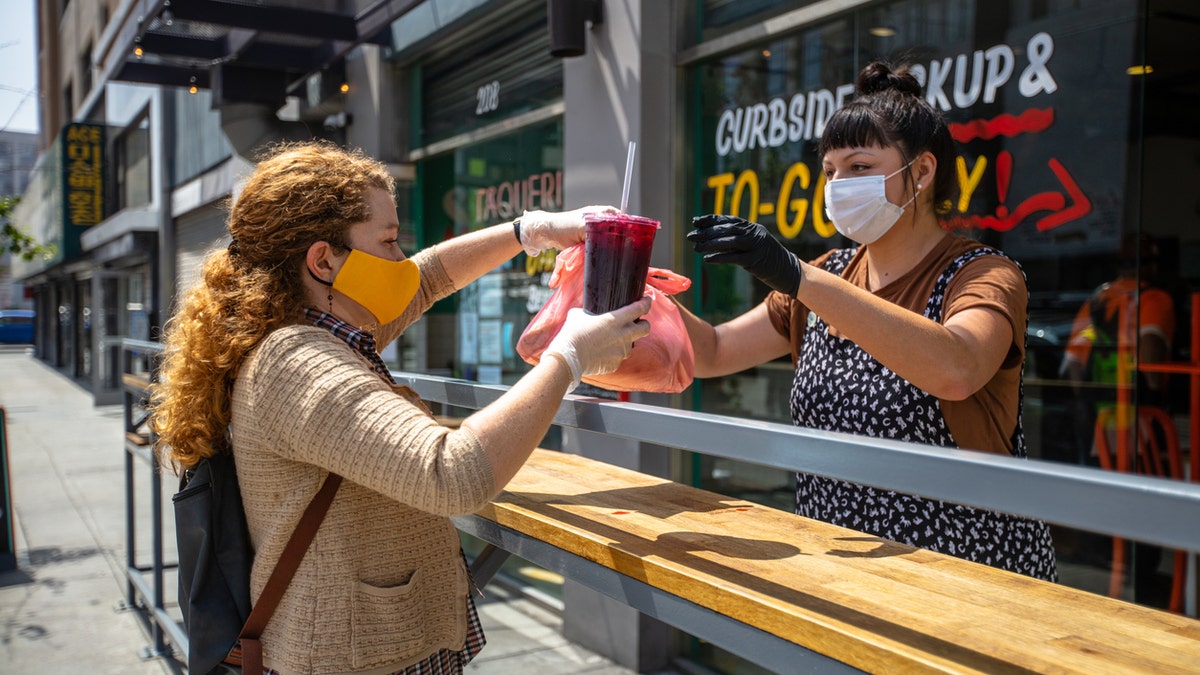Fox News Flash top headlines for November 11
Fox News Flash top headlines are here. Check out what's clicking on Foxnews.com.
The Centers for Disease Control and Prevention (CDC) on Tuesday updated its guidance on coronavirus-related face masks to include protection for the wearer, too.
The update takes the federal health agency’s previous stance further, which held that wearing a face mask can lower virus spread to others.
The CDC said early research supports community masking to lower virus spread, particularly when it’s estimated that more than half of transmissions stem from asymptomatic people. The agency also explained the filtration power of masks, writing: “Studies demonstrate that cloth mask materials can also reduce wearers’ exposure to infectious droplets through filtration, including filtration of fine droplets and particles less than 10 microns.”
CLICK HERE FOR FULL CORONAVIRUS COVERAGE

The CDC updated its guidance to say face masks offer protection to the wearer, too. (iStock)
Masks with multiple cloth layers are more effective in blocking tiny, potentially virus-laden particles from passing through and exposing the wearer to infection, per the CDC. In fact, the CDC said these masks “in some cases filter nearly 50% of fine particles less than 1 micron.”
“Some people may be confused since we’ve heard the guidance change on this issue," Dr. Sonja Bartolome, a lung disorders expert from UT Southwestern, not involved with the CDC, wrote to Fox News. "However, in this COVID-19 pandemic we are seeing science work in real time. Science takes time, and we must observe the infection in real-time to understand its spread.”
The CDC also listed several specific examples supporting the findings, including an instance where universal mask wearing prevented two coronavirus infected, symptomatic hairstylists from spreading the virus to at least 67 clients.
But specifically in terms of evidence supporting protection for the wearer, the agency found, among other studies, that 1,000 people in Thailand who wore masks during “high-risk exposures" dropped their chance of infection by 70%.
Also, among other examples, a study on over 100 Beijing households revealed that masks lowered virus transmission to other people in the same home by 79%.
Coronavirus transmission at home is a common occurrence, per a recent CDC report. The agency assessed 101 households in Nashville, Tenn., and Marshfield, Wis., from April to September. Over half (53%) of all household contacts were infected and “secondary infections occurred rapidly, with approximately 75% of infections identified within five days of the index patient’s illness onset,” per the report.
In the updated guidance on Tuesday, the CDC suggested the benefits of universal mask wearing could extend beyond preventing virus spread, but could have some financial perks, too.
“An economic analysis using U.S. data found that ... increasing universal masking by 15% could prevent the need for lockdowns and reduce associated losses of up to $1 trillion or about 5% of gross domestic product,” the agency wrote.
Finally, the CDC said individuals can further benefit as the number of community members wearing masks also increases.
The CDC has continued to refine and update its guidance as the pandemic has progressed and more research comes up. For example, in October it revised its definition of close contact to include multiple, brief exposures to an infected individual adding up to over 15 minutes within 24 hours – as opposed to being within six feet of an infectious person for 15 minutes straight.

